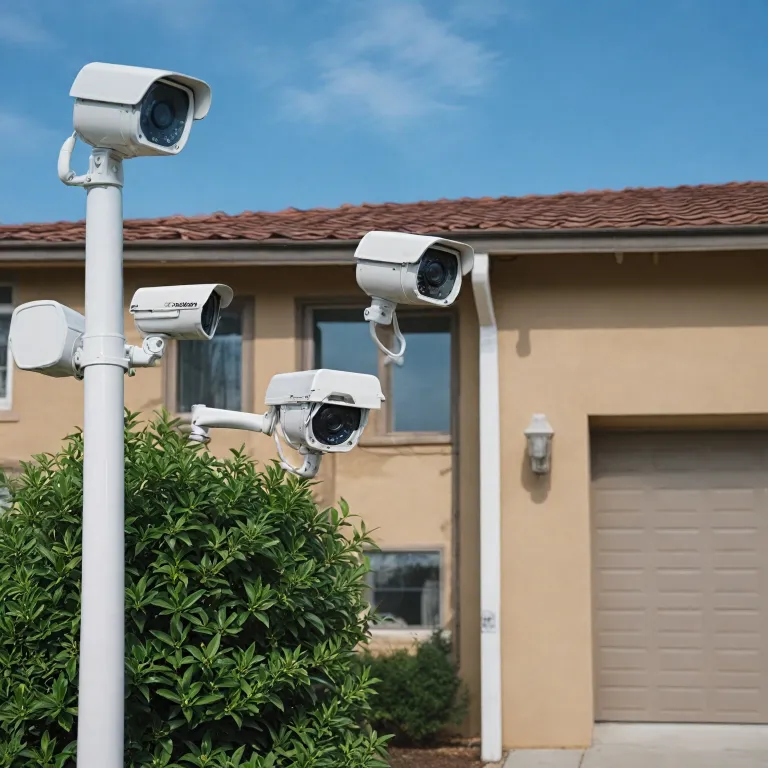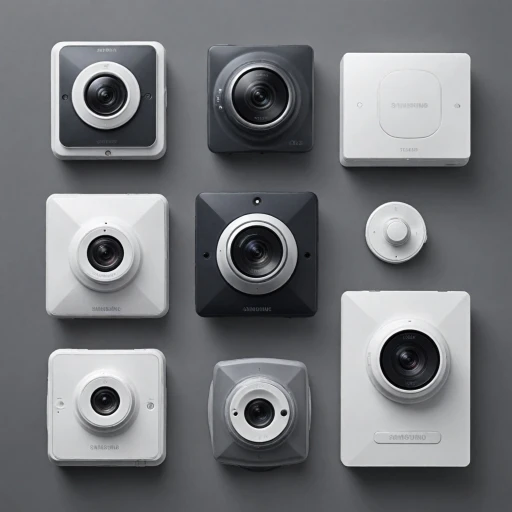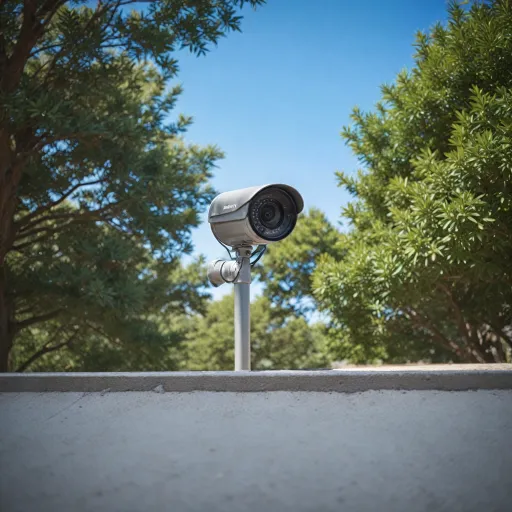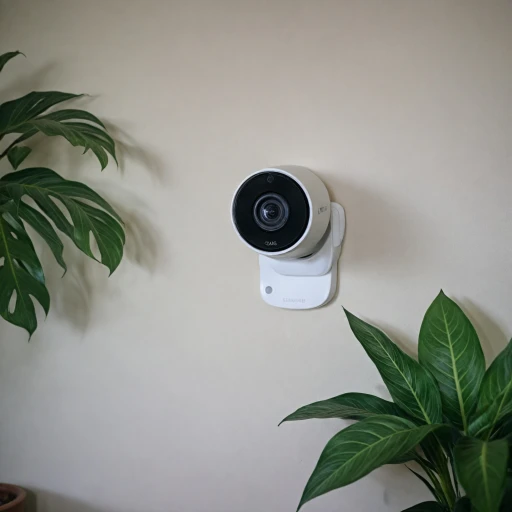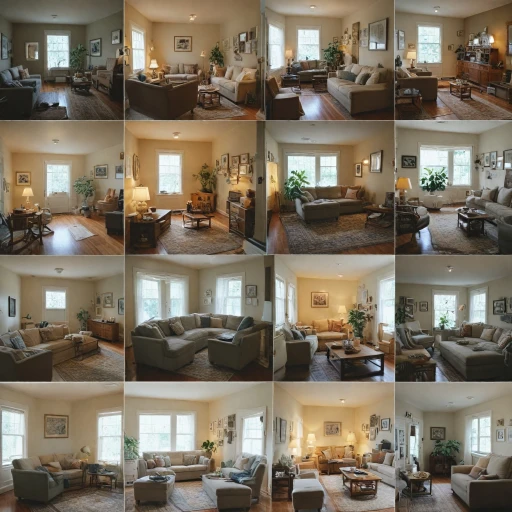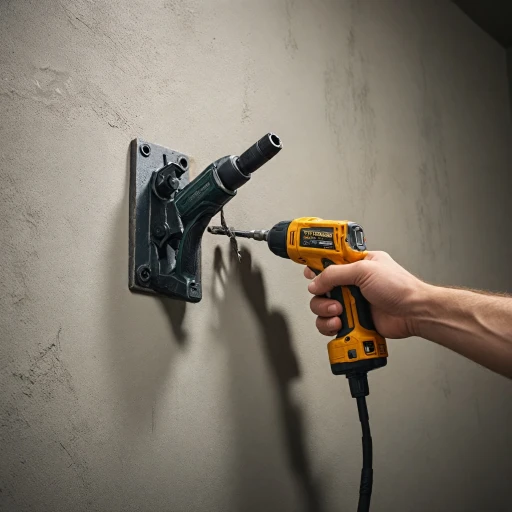
What Does NDAA Compliance Mean for Security Cameras?
Understanding NDAA Compliance in Security Cameras
The term NDAA compliance may seem complex, but it is crucial in today's security camera market. NDAA stands for the National Defense Authorization Act, a United States federal law that sets the budget and expenditures of the U.S. Department of Defense. Part of this legislation involves regulations around the use of technology, specifically prohibiting certain manufacturers and components due to national security concerns.
When it comes to security cameras, NDAA compliance means that the camera systems do not include components from banned manufacturers known to potentially compromise security. This is vital for entities within the United States seeking to maintain secure surveillance systems without risking potential vulnerabilities. NDAA-compliant cameras ensure that your surveillance system aligns with these stringent regulations and supports your security needs while respecting legislative standards.
For users of devices like Ring cameras, it's imperative to understand how these guidelines impact product choices and the overall security landscape. Incorporating NDAA-compliant cameras into your security systems provides peace of mind. These devices come equipped with features like advanced night vision and motorized zoom lens capabilities, making them practical for various security scenarios.
The significance of video surveillance extends to its compliance, ensuring not just the protection of your premises but also adherence to national security standards. As we explore deeper into the realm of compliant security cameras, it becomes apparent how these elements impact users and manufacturers alike in shaping future-proof security solutions.
For more insights into the robust features available with the Ring app, take a look at our related article, where we delve into the capabilities that complement the hardware of these security cameras.
How Ring Cameras Fit into the NDAA Compliance Landscape
Integrating Compliance: Ring Cameras in the Security Sphere
Considering the rapid evolution of security demands, understanding how Ring cameras align with NDAA compliance standards is crucial for informed decision-making. Here, we will delve into the intricacies of how Ring cameras fit into the NDAA-compliant security landscape. To start, the National Defense Authorization Act (NDAA) outlines specific prohibitions on certain manufacturers and products for national security reasons. These regulations ensure that the security devices deployed do not pose a risk of vulnerability or unauthorized surveillance. As one might expect, compliance can deeply impact which manufacturers and systems are eligible for use in sensitive environments.Examining Ring's Position in the Compliance Framework
While Ring cameras aren't explicitly flagged by current NDAA restrictions, understanding their broader compliance framework is beneficial. Ring, a well-known player in the home security camera market, offers several models featuring advanced technologies like built-in microphones, motorized zoom lenses, and night vision capabilities. These features enhance the overall functionality but require careful consideration in terms of regulations. It's important to compare the distinct offerings from different security cameras. While some cameras, such as PoE dome cameras or bullet cameras with motorized zoom, are explicitly marketed as NDAA-compliant, others may require further scrutiny. As a prospective user, consider exploring relevant Ring camera technology essentials to understand how these cameras utilize advanced tech responsibly, ensuring compliance where applicable.Advantages and Considerations
When selecting an NDAA-compliant system, transparency from manufacturers regarding compliance is key. Users of Ring cameras may find that while these products are not inherently restricted, due diligence in confirming compliance details from suppliers is advisable. Staying informed about product updates and part lists can prevent adding non-compliant products to your cart. Ultimately, by understanding where Ring cameras fit into the broader NDAA compliance conversation, users can make educated choices that balance modern security needs with necessary regulatory adherence, ensuring safety without compromising on legal mandates.Key Features of NDAA-Compliant Security Cameras
Unveiling Key Traits for Secure Choices
NDDA-compliant security cameras carry several essential features tailored to meet national security standards. They distinguish themselves from regular cameras by incorporating specific technologies and manufacturing practices. Here's what sets these compliant cameras apart:- Video Encryption: This ensures that video data is secure and cannot be easily intercepted by unauthorized individuals. Most NDAA-compliant cameras offer robust encryption protocols.
- PoE (Power over Ethernet): Many compliant systems utilize this technology for transmitting data and power over the same cable, simplifying installation and maintenance.
- Builtin Mic: Audio recording capabilities often come as an integrated feature, helping in comprehensive surveillance.
- Night Vision: Enhanced clarity in low-light conditions with advanced night vision enables these cameras to deliver consistent surveillance around the clock.
- Zoom Lens Options: Cameras often feature motorized zoom or optical zoom lens capabilities, allowing users to focus closely on subjects without losing video quality.
- Diverse Camera Types: Security options range from bullet cameras for focused monitoring to vandal dome models that offer extensive area coverage and vandal resistance.
Benefits of Using NDAA-Compliant Cameras
Advantages of Embracing NDAA-Compliant Security Cameras
Choosing NDAA-compliant security cameras brings several benefits, especially for users of Ring cameras. These advantages not only enhance your security systems but also provide peace of mind by aligning with national security guidelines.- Enhanced Security Assurance: NDAA-compliant cameras meet requirements set by national security, ensuring they are free from vulnerabilities linked to unauthorized manufacturers. This compliance indicates a higher standard of trust and reliability in video surveillance.
- Advanced Features: Many NDAA-compliant models boast the latest in camera technology, including night vision and motorized zoom lenses, providing clear images regardless of the light conditions. Products like vandal dome and bullet camera designs are often seen in compliant security systems, offering robust protection and versatility.
- Diverse Range: There is a broad variety of compliant cameras available, from dome cameras to those equipped with built-in microphones and video zoom. This range makes it easier to find options that suit different surveillance needs, from residential to enterprise environments.
- Future-Proofing Security Solutions: By integrating NDAA-compliant cameras into your systems, you stand prepared for future legislative changes regarding security technology. This future-proofing safeguards your investment and ensures ongoing compliance.
- Trusted Manufacturers: The list of NDAA-compliant manufacturers often includes leading names known for their expertise in security technology. This credibility further validates the quality and reliability of the security devices compared to non-compliant options.
Challenges and Considerations for Ring Camera Users
Potential Hurdles for Users Navigating NDAA Compliance
As you explore the world of NDAA-compliant security cameras, there are a few challenges and considerations specific to Ring camera users that you might encounter, particularly when attempting to integrate them into existing systems.- Compatibility with Existing Systems: If your security setup includes both NDAA-compliant devices and non-compliant ones, you might face difficulties integrating them seamlessly. It’s crucial to ensure that all components within your security systems can work together effectively, considering factors like data formats, powered over Ethernet (PoE) requirements, and video surveillance standards.
- Understanding Product Specifications: Not all Ring cameras are NDAA-compliant, so it's important to diligently compare features like night vision capabilities, motorized zoom lens options, and the built-in mic functionalities. Investing in compliant cameras means thorough research on specifications is necessary, which can sometimes complicate the selection process.
- Cost Considerations: While transitioning to NDAA-compliant security, you may notice an uptick in costs, considering the high standards set for technology and build quality. However, these could be worthwhile expenses for supporting national security interests and maintaining future-proof video surveillance.
- Supply Chain Limitations: The list of manufacturers providing compliant cameras can sometimes be limited, affecting availability and range of options. This may limit your ability to quickly obtain specific features or styles like vandal dome or bullet camera designs.
Choosing the Right NDAA-Compliant Security Solution
Evaluating the Best Security System Fit
When selecting an NDAA-compliant security solution, it's critical to assess various aspects to ensure you're making the most informed decision. Here are essential considerations:
- Compatibility: Ensure that the security cameras you choose are compatible with your existing security systems. This includes checking if they support features like night vision, motorized zoom lenses, and built-in microphones.
- Type of Cameras: Decide between different camera types such as bullet cameras, dome cameras, and vandal dome options. Each has unique advantages that may influence your decision based on your security needs.
- NDAA Compliance: Verify that the cameras and systems you intend to add to your security setup are fully NDAA compliant. This compliance is crucial for national security and legal adherence.
- Video Capabilities: Look into the video quality offered by the cameras. Factors like resolution, zoom capabilities, and night vision add to the effectiveness of video surveillance.
- Systems Integration: Determine if the new security cameras can be easily integrated into your current setup, allowing for seamless video, viewing, monitoring, and control via your preferred devices.
- Manufacturer's Reputation: Consider cameras from reputable manufacturers known for high-quality compliant cameras and customer support. This ensures reliability and trust in your security solution.
- Poe and Connectivity: Evaluate whether you need Power over Ethernet (PoE) enabled cameras for more straightforward installation and reliable power and data connection.
- Professional Guidance: If required, seek expert advice to compare and list the best options tailored to your specific security environments.
By carefully reviewing these factors, you can confidently add the right NDAA-compliant cameras to your security cart. This ensures not only compliance but also optimal security for your premises. Explore manufacturer lists and compare options to pinpoint the solution that fits your unique requirements.
